With winter on the way, it’s time to give your shed a routine maintenance check in preparation for the cold wet months to come. Here are some practical tips to keep your shed in top condition, and advice on the best ways to winterise your shed so you can continue to enjoy it all year round. Here’s how to prepare your shed for whatever the weather throws at it.
At a glance:
- How to do a shed maintenance check
- How to repair your shed's roof
- How to replace a shed window
- How to waterproof a wooden shed
- How to damp proof a wooden shed
- How to ventilate a wooden shed
- How to insulate a shed
- How to heat a shed
- How to organise your shed for winter storage
- How to secure your shed
1: How to do a shed maintenance check

Image: 8 x 6 Shiplap Reverse Apex Wooden Shed from Waltons
A thorough maintenance check begins with the roof and works though each section of your shed in a systematic way. Begin with the roof, before moving on to look at guttering, side panels, windows, doors, floor, foundations and drainage.
-
Inspect your roofing felt
Roofing felt is a bitumen-based material available as a single skin which can be covered with decorative felt ‘shingles’. It’s good value for money, but the downside is that felt deteriorates over time.
Get your stepladder out and give your shed roof a thorough once over. Pay particular attention to the apex, and edges of the roof, plus the areas around nail heads, as these are the most likely to fail first.
-
Check your gutters
Make sure your gutters are firmly attached and clear of leaves and other debris. Don’t have gutters? At the very least, your shed roof should have generous eaves so that rainwater falls to the ground rather than trickling down the walls.
Undirected runoff can create muddy puddles and may result in water collecting under your shed base, causing rot and decay. If you don’t have guttering, do consider installing it, not least because doing so enables you to collect rainwater which you can direct into a water butt for future use.
You may also need to take additional measures to avoid flooding. An excellent drainage solution for small buildings is to build a French drain. Water always follows the gradient so, selecting the lowest lying side of your shed site, dig a trench alongside it, making sure that you angle away from your shed base by about 45 degrees to ensure you don’t weaken your shed foundation. Fill the trench with graded stone and shingle.
-
Check windows and doors
Wooden window frames, door frames and surrounds require regular maintenance to keep them in functional condition. Check and oil hinges, handles and locks, clear window vents of debris and check draft excluders and seals and replace as necessary. Broken or damaged panes? See our guide on how to replace a broken window before the weather gets too bad.
Wash down wooden frames with hot soapy water before inspecting for paint blistering, water ingress and rot Pay particular attention to joints and end grains. Treat water penetration by removing paint to allow the wood to dry before treating with end grain sealant and repainting.
Use a screwdriver to gently probe woodwork for rot. Dig out affected areas, treat with preservative and fill with exterior grade wood filler. Allow to dry then sand, prime and paint.
-
Check floor and base
Clear as many tools and as much equipment from your shed as you’re able, so that you can check your floor properly. Look for obvious damp patches, and have a good walk over it feeling for springy areas which might indicate an issue with the floor bearers.
Also inspect as much of your shed base as you can see. Look out for signs of subsidence which might be obvious, with the shed visibly listing, but could also be more subtle – windows and doors jamming can be a sign that subsidence is making your shed distort.
Having thoroughly inspected your shed for damage, rot and any other issues, it’s time to resolve any problems you may have found.
2: How to repair your shed roof

Image: 7 x 5 Overlap Single Door Apex Windowless Wooden Shed from Waltons
Roofing felt is relatively easy to replace, but a repair is often all it needs. First you’ll need to remove the fascia boards, and the tacks holding the felt in place. Now cut out the damaged section and replace with new. Tack down the new felt and replace the fascia boards. For step-by-step instructions for how to repair a shed roof, be sure to check out our detailed guide.
If your felt is seriously worn or damaged, consider replacing it with EPDM, a waterproof rubber membrane which is made to order as a single sheet and is supplied with the correct adhesive. If properly installed, EPDM lasts for many years without deterioration.
3: How to replace a shed window

Image: Waltons
Shatterproof styrene windows are twices as strong as glass and rarely break, but if you own an older shed with glass windows, or your styrene windows have yellowed with age, replacing a window pane is a straightforward process which anyone with basic DIY skills can achieve.
Refer to our guide on how to fix a broken shed window for simple step-by-step instructions. We also offer a handy video so you can see just what’s involved – it really is easier than you might think.
4: How to waterproof a wooden shed

Image: Waltons
The best way to ensure your shed is properly waterproof is to make sure it’s correctly installed in the first place. Your shed base must be robust enough to take the weight of your shed and all your tools and equipment or it will subside. This makes the building distort, opening cracks through which rain water penetrates.
Our quality garden sheds are constructed from timber pressure-treated with wood preservative and guaranteed to last for at least a decade – but it’s still very important to apply a suitable timber treatment as soon as your shed is in place, and then each year thereafter. Making sure your shed is protected from the elements stops the preservative leaching from the timber and prevents rot.
To keep damp at bay, make sure you have adequate access all around your shed so that air circulates easily, wicking away damp before it can build up. Do also cut back any weeds or shrubs growing up the side of your shed – these are sure to cause damage.
We offer a free guide on how to build a shed base, and also offer an in-depth guide on how to waterproof your shed if you need further advice.
5: How to damp proof a shed
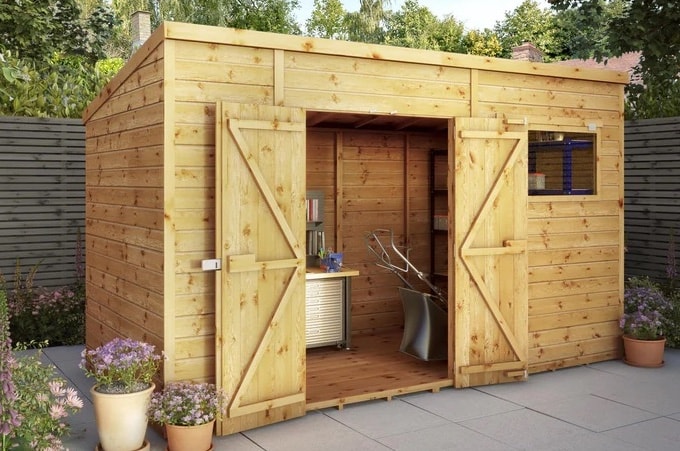
Image: 12 x 8 Premium Shiplap Pent Shed from Waltons
Making sure you keep your shed in good condition so that rain water can’t get in goes a long way to ensuring your shed remains damp-free. But even the most well-maintained sheds can sometimes suffer from damp problems. That’s usually because moisture from the air condenses on cool surfaces like saw blades, lawn mowers, and other tools and equipment. If you’re not careful, moisture build-up inside the building can lead to issues with mould, rust and even rot.
Adequate insulation, heating, and ventilation keep damp at bay – all easy-to-install solutions which can be retro-fitted at very little cost. For further tips on how to damp proof your shed, take a look at our comprehensive guide.
6: How to ventilate a wooden shed
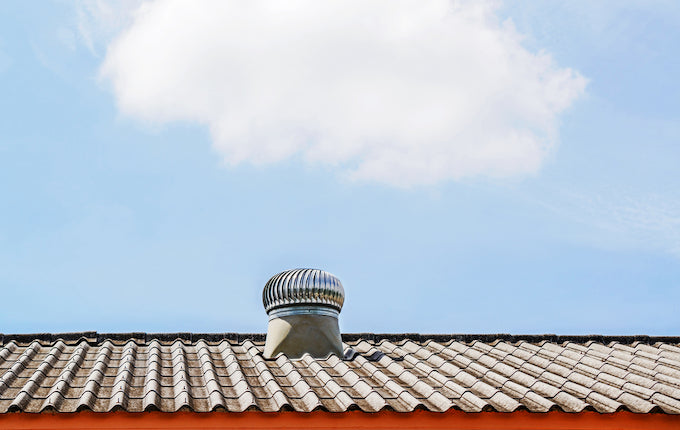
Image: Take Photo/Shutterstock
Good air flow is essential for keeping the atmosphere inside your shed fresh and avoiding damp build-up. Simple actions like taking advantage of dry weather to open the door and windows, installing air vents, and perhaps adding a mechanical ventilator like a whirligig or electric fan, will all help to improve air flow.
If you’re considering investing in a new shed, do think about where you’re going to locate it. Positioning your shed to take advantage of the prevailing wind direction means that every time you open the door, you’ll be sure to replace some of the air inside. For more information on how to ventilate your shed, please check out our handy guide.
7: How to insulate your shed

Image: Waltons
All of Waltons premium garden rooms come with insulation as standard, but even if your shed is not currently insulated, it’s well worth retro-fitting it. From inexpensive and space-saving solutions like bubble wrap, to PIR insulation boards (also known by their brand names Celotex and Kingspan), as well as wool or rock wool, there’s a wide range of insulation products to choose from.
We provide a comprehensive guide to insulating your shed, including details on preparatory work to fix draughts and make sure windows and doors are well sealed. Combining insulation with ventilation and heating banishes damp and makes sure your shed remains warm, dry, and comfortable enough to use all year round.
8: How to heat your shed

Image: Shutterstock
Installing heating in your shed is easy, especially if you have an electricity supply. But even if you don’t, there are several other viable solutions for keeping your shed or workshop warm during the cold winter months. You might, for example, consider installing a wood burner or, depending on your location, install a solar-powered system.
If you’d like to take your shed off-grid, we have the information you need to help you meet your heating, lighting and power needs. But, if you have power, why not take a look at our guide to heating your garden building in winter – this contains a run down of all the different solutions on offer, and will help you make the right choice to suit your needs and budget.
9: How to organise your shed for winter storage
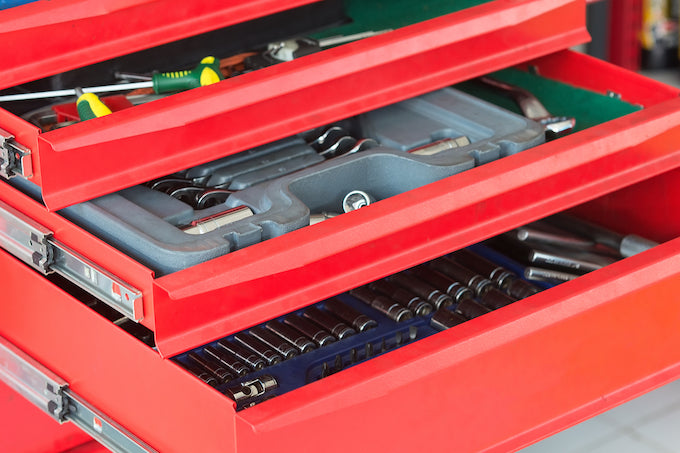
Image: Peeranat Thongyotee/Shutterstock
When you’re not using your tools and materials, pack them away in cupboards, drawers, cabinets and boxes. To protect power tools from damp, move them indoors during the winter. If you do leave tools in the shed during the cold wet months, make sure they’re not left lying around, and place silicon sachets in tool boxes to absorb moisture before it causes damage.
Make sure you give your shed a thorough clean before winter sets in. Sawdust and dirt left lying around attract moisture, helping to fuel mould growth and making the air inside your shed smell musty. For some helpful tips, here are 10 genius ways to organise your shed.
10: How to secure your shed
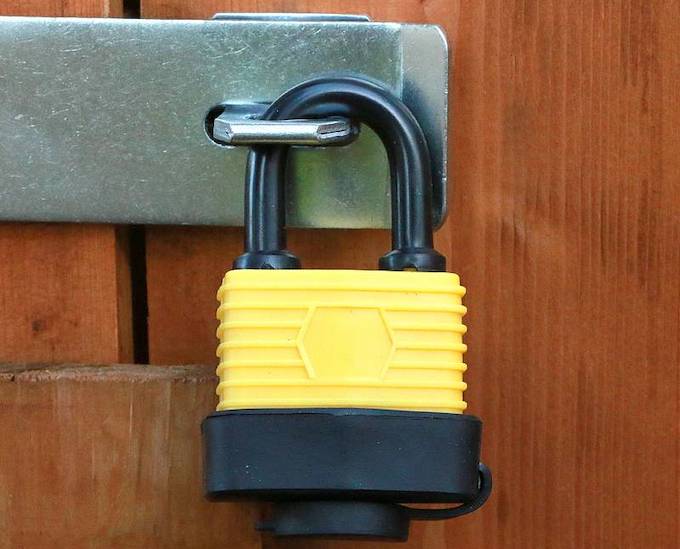
Image: 49mm weatherproof padlock with hasp and staple from Waltons
How you choose to secure your shed depends on the crime level in your area, and what you store inside the building. Many of our sheds are supplied with padbolt, but even if your shed currently has no security features, we have tips to help keep your belongings secure.
From installing locks to burglar-proofing door hinges, protecting windows, and installing alarm systems, see our article on how to secure your shed for advice on how to make your shed safe from break in.
Regular maintenance and forward planning are all you need to make sure your shed rides out the winter in tip-top shape. Please do take advantage of the array of shed maintenance and improvement guides we offer. By applying a few simple measures, your shed, tools and equipment will see out the winter with ease, and give you many more years of good service.
Lead image: Carmina_Photography/Shutterstock

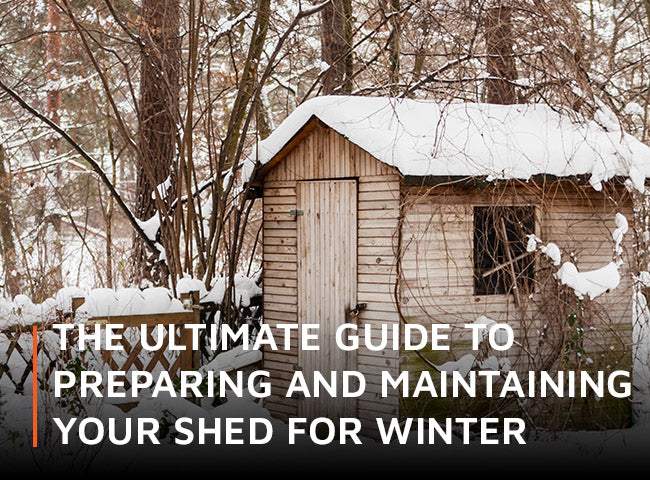

Share:
How to insulate your shed
How to heat a garden building in the winter